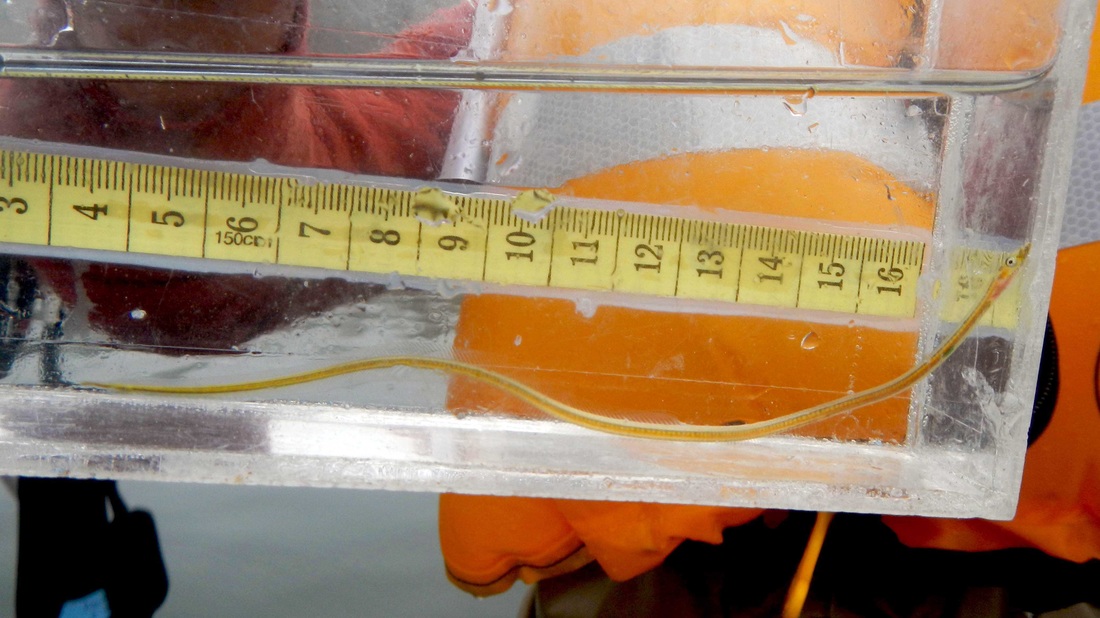Quillfish • Ptilichthys goodei
{Ptilon = feather, ichthys = fish; goodei = named after the American ichthyologist Dr. G. B. Goode}
Identification
The long, slender body of this distinctive fish gives it a snake-like appearance, which is further aided by its serpentine movements. It has a tiny mouth, a line of tiny hooked spines going down its back behind its head, and a tail fin so reduced it is as thin as thread (if it isn't missing altogether, which it often is). The quillfish can be up to 40 cm long.
Habitat & Range
Adults are usually found resting on or buried in soft substrates (such as mud or sand) in shallow waters. Juveniles may be observed at the surface at night; they are thought to be attracted to lights shining into the water. It is found in both the east and west Pacific Ocean: from central Oregon north to Alaska, through the Aleutian Islands to the Sea of Okhotsk and the Kuril Islands and south to Japan.
Intriguing Info
Little is known about this species, which is the only known member of its family (Ptilichthyidae).
iNaturalist
https://www.inaturalist.org/taxa/229394-Ptilichthys-goodei
The long, slender body of this distinctive fish gives it a snake-like appearance, which is further aided by its serpentine movements. It has a tiny mouth, a line of tiny hooked spines going down its back behind its head, and a tail fin so reduced it is as thin as thread (if it isn't missing altogether, which it often is). The quillfish can be up to 40 cm long.
Habitat & Range
Adults are usually found resting on or buried in soft substrates (such as mud or sand) in shallow waters. Juveniles may be observed at the surface at night; they are thought to be attracted to lights shining into the water. It is found in both the east and west Pacific Ocean: from central Oregon north to Alaska, through the Aleutian Islands to the Sea of Okhotsk and the Kuril Islands and south to Japan.
Intriguing Info
Little is known about this species, which is the only known member of its family (Ptilichthyidae).
iNaturalist
https://www.inaturalist.org/taxa/229394-Ptilichthys-goodei
References
Froese, R. and Reyes, R.B. Ptilichthys goodei Bean, 1881. FishBase. Accessed 07/09/2017.
Lamb, A. and Edgell, P. Coastal Fishes of the Pacific Northwest. Revised. (2010). Madeira Park, BC: Harbour Publishing. P. 138.
Authors and editors of page
Kelly Fretwell (2017).
Froese, R. and Reyes, R.B. Ptilichthys goodei Bean, 1881. FishBase. Accessed 07/09/2017.
Lamb, A. and Edgell, P. Coastal Fishes of the Pacific Northwest. Revised. (2010). Madeira Park, BC: Harbour Publishing. P. 138.
Authors and editors of page
Kelly Fretwell (2017).





